From Arizona Department of Commerce 7/1/2008 (no recent document found, converted from old .pdf by AZSC)
State of Arizona Solar Devices: Guidelines and Procedures
SECTION 1. GENERAL
1.1 Introduction
These guidelines and procedures are intended to more specifically address the issues regarding Arizona's solar legislation, including, but not limited to, the following statutes and appropriate subsections:
42-1301 (taxation), 42-1310.01 (taxation), 42-1310.16 (taxation), 43-1083 (taxation), 44-1761 (trade and commerce), 44-1762 (trade and commerce)
1.2 Scope
These guidelines and procedures are applicable to all residential solar thermal, solar electric, solar daylighting and other renewable resource devices and installations as specified in the legislation and this document.
IMPORTANT NOTE: These guidelines and procedures apply to all residential devices and installations and are in force whether or not there are any state tax credit or other incentives available. For example, a solar or other application which may meet the definition of a "solar device" (ARS 44-1761), but does not meet the standards, rating, certification or other part(s) of these guidelines, MAY NOT BE SOLD AND/OR INSTALLED IN ARIZONA.
Only those devices and systems covered by this document (see Section 5) are subject to State certification, rating and other standards.
Section 2: Solar Thermal Water Heating
Section 3: Solar Electric/Photovoltaic (including wind electrical systems)
Section 4: Solar Daylighting
Section 5: General devices/systems descriptions
A. Sample Format for Statement of Certification -- all systems
B. Sample format for Statement of Performance -- all systems
C. Sample format for Statement of Warranty Coverage -- solar thermal
D. Sample format for Statement of Warranty Coverage -- all systems except solar thermal.
(Note: the text below is essentially the same as the links above)
SECTION 2. SOLAR THERMAL WATER HEATING
There are two primary concerns regarding solar domestic water heating: component and installation certification (section 2.1), and warranty requirements (section 2.2).
2.1 Component and installation certification (applies to all solar thermal systems):
2.1.1 All installations must meet or exceed the Uniform Plumbing Code (UPS), Uniform building Code (UBC) and the National Electric Code (NEC), at a minimum, and any code(s) adopted by the municipality in which the device is being installed.
2.1.2 As of June 1, 1995, all solar water heating products and systems and their installations must conform to the guidelines and procedures of the current (at time of sale) Solar Rating and Certification Corporation (SRCC) OG-300 document, or equal, with the following exceptions, additions and/or alterations.
- If the system is installed in any manner other than test conditions, the installing company is responsible for determining and providing for proper collector design flow rate as required to maximize performance and minimize system malfunctions, especially those malfunctions due to water quality conditions. This includes, but is not limited to, pump/pipe sizing calculations and providing a larger pump where necessary to accommodate the system's own specific flow requirements.
- If the system is installed in any manner other than test conditions, the installing company is responsible for determining and providing for proper collector design flow rate as required to maximize performance and minimize system malfunctions, especially those malfunctions due to water quality conditions. This includes, but is not limited to, pump/pipe sizing calculations and providing a larger pump where necessary to accommodate the system's own specific flow requirements.
- All materials exposed to sunlight, direct or indirect, will be suitable for outdoor use. This includes pipe and pipe insulation (includes coatings), sensor wire, wire connections, etc.
- The solar collector must not be shaded during the time period from 9 AM to 3 PM at any time during the year. If future shading is expected, for example, due to vegetation growth, the purchaser must be notified. If avoiding collector shading is not possible, the system purchaser must be given a written statement describing the time periods in which the system can be expected to operate at less than peak performance due to collector shading (see also Section 2.3., below).
- The installation of a suitable electric water heater element control device is required for all electric- assist systems to prevent the electric -assist element from operating during normal solar collections hours. A manual override method must be included and the purchaser must be provided written instructions in the use of override and the resetting of the timer after a power failure if applicable.
- System overheat protection must be included to prevent excessive component temperatures and pressures, and to prevent excessive precipitation of dissolved solids.
2.2 Warranty coverage:
2.2.1 The warranty requirements for the "supplier" (as defined in SRCC documents OG-300) will stand as written in the current (at time of sale) applicable SRCC documents. If the system has been certified under a testing authority other than SRCC, the SRCC warranty requirements will prevail.
2.2.2 The warranty requirements for the installation company will be as follows:
- The installation company will provide a full parts and labor warranty for the entire system for two (2) years from date of installation.
Full parts and labor warranty includes, but is not limited to, any and all component failure(s). whether it is covered by the original manufacturer or not; any and all installation-related malfunction(s); any and all high-temperature problems(s) including those related to water quality. Any manufacturer's warranty(ies) are in addition to, not in lieu of, the installation warranty requirements. Warranty is not required to cover problems resulting from exposure to harmful materials and chemicals, fire, flood, lightning, hurricane, tornado, hailstorm, earthquake, or other acts of God, vandalism, alteration of system by anyone not authorized by the installation company, or any other cause beyond the control of the installation company.
b. The installation company will provide a full parts and labor warranty against any and all freeze- damaged component(s) for five (5) years. This includes freeze damage due to water quality problems and component failures.
Note b.1: Ambient temperatures below 4 degrees C (39 degrees F) can cause freeze damage to solar collectors, transport pipe and other system components. These cold temperatures and freezing conditions are common throughout the state of Arizona and are not considered an act of God. All freeze damaged system components are subject to the freeze warranty as specified above.
Note b.2: The freeze protection on some system types can be accidentally disabled by the user. Since this condition is intrinsic in the system design, freeze damage due to accidental disabling by the user is not cause for indemnification of the installing company. The installation company is specifically responsible for any freeze damage due to accidental disabling of the freeze protection.
Note b.3: The freeze protection on some system types can be rendered less effective or completely useless due to electric power failures at the system site. Since this condition is intrinsic in the system design, freeze damage due to lack of electric power at the system site is not cause for indemnification of the installing company. The installing company is specifically responsible for any freeze damage due to electric power failure at the system site.
2.3 Written certifications:
For all solar heating systems, the purchaser must be furnished with a written statement of certification (see A), a statement of performance which include what general thermal performance the purchaser can expect from the system under typical conditions (see B), and a statement of warranty coverage (see D). This is in addition to, not in lieu of, all information required to be given to the purchaser by the product and system test certification documents (SRCC OG-300 or equal).
SECTION 3. SOLAR ELECTRIC/PHOTOVOLTAIC (INCLUDING WIND ELECTRICAL ENERGY SYSTEMS)
There are three primary concerns regarding solar electric/photovoltaic systems: installer certification (section 3.1), component and installation certification (section 3.2), and warranty requirements (section 3.3).
3.1. Installer certification:
At the time of this document's adoption, there are no installer certification requirements other than those rules and regulations of other State and local entities including, but not limited to, the Registrar of Contractors.
3.2. Component and installation certification:
At the time of this document's adoption (~2008), there are no complete system installation specifically described herein. There are, however, some component and subsystem installation requirements (see 3.2.1).
Those conditions as required by other entities are in effect -- the Registrar of Contractors, for example, requires an electrical contracting license for installation of many solar photovoltaic systems. All installations must meet or exceed the UBC and NEC at a minimum, and any code(s) adopted by the municipality in which the device is being installed.
3.2.1 Subsystem installation and component certification requirements:
There are subsystem installation and component certification requirements for photovoltaic modules and battery systems as required by the specific application. The installer is responsible for ensuring that the subsystem and product installed meets or exceeds all applicable requirements.
- The photovoltaic (PV) modules and installation must meet or exceed the following testing/safety/performance standards as required by the specific installation (asterisk * denotes required for all modules and installations): All applicable NEC requirements*, U.L. 1703*, JPL Block V,CEC Specification 503, IEC 904-3, IEC 1215. In addition, the PV modules and related components must meet or exceed the following testing/safety/performance standards as required by the specific installation: USHUD approval, RVIA approval.
- The battery storage subsystem must meet or exceed the following testing/safety/performance standards as required by the specific installation: ANSI/IEEE 929-1988 (if utility interface), ANSI/IEEE 937-1987, ANSI/IEEE 1013-1990.
- Wind energy systems generating electricity )as opposed to water pumping, etc.) must conform to the American Wind Energy Association standard AWEA 1.1-1985.
- The solar collector must not be shaded during the time period from 9 AM to 3 PM at any time during the year. If future shading is expected, for example, due to vegetation growth, the purchaser must be notified. If avoiding collector shading is not possible, the system purchaser must be given a written statement describing the time periods in which the system can be expected to operate at less than peak performance due to collector shading (see also Section 3.4., below).
- Any and all connections to the electric utility grid must be made with the permission, approval and cooperation of the utility owning, operating and/or maintaining the distribution system. All components and their installation must be capable of protecting the existing grid and its operators and maintenance personnel from damage and injury per the instruction and approval of the utility responsible for the line access.
3.3 Warranty coverage:
3.3.1 The warranty requirements for the installation company will be as follows:
The installation company will provide a full parts and labor warranty for the entire system for two (2) years from date of installation.
Full parts and labor warranty includes, but is not limited to, any and all component failure(s), whether it is covered by the original manufacturer or not; and any and all installation-related malfunction(s). Any manufacturer's warranty(ies) are in addition to, not in lieu of, the installation warranty requirements. Warranty is not required to cover problems resulting from exposure to harmful materials and chemicals, fire, flood, lightning, hurricane, tornado, hailstorm, earthquake, or other acts of God, vandalism, alteration of system by anyone not authorized by the installation company, or any other cause beyond the control of the installation company.
3.4 Written certifications:
For all solar electric/photovoltaic systems, the purchaser must be furnished a written statement of certification (see A), a statement of performance (see B), which must include what general performance the purchaser can expect from the system under typical conditions, and a statement of warranty (see D).
SECTION 4: SOLAR DAYLIGHTING
There are 4 primary concerns regarding solar daylighting systems: installer certification (section 4.1), installation certification (section 4.2), product certification (section 4.3), and warranty requirements (section 4.4).
4.1 Installer certification:
There is only one (1) requirement for an installer of a solar daylighting device at the time of this document's adoption. The installer must have completed and passed any training provided by the manufacturer of the daylighting device.
4.2. Installation certification:
There are no requirements beyond those conditions specified by the Registrar of Contractors. For those installations not requiring a contractors license, for example, when the total aggregate cost is less than $750, it is recommended that the installing company have a B1 (general contracting) and/or C65R (glazing) license(s).
4.3 Product certification:
There are two requirements for product certification.
4.3.1 The basic device must meet ENERGY STAR® Program Requirements for Residential Skylights.
4.3.2 The basic device must be approved by the Department of Commerce Energy Office as a solar daylighting device. The manufacturer or the installing company must submit to the Department of Commerce Energy Office (1700 W. Washington Street, Suite 220, Phoenix, Arizona 85007) a detailed description with accompanying graphics (drawings, photos) for each model with substantial design differences. It is not necessary to obtain ENERGY STAR® Program Requirements for Residential Skylights or DOCEO approval of additional models within a model range or for minor design modifications that are supported by an engineer's written report that the additional model meets or exceeds the performance of the approved model(s). The Energy Office will issue a written response regarding the status of the device.
- The purchaser must be supplied a copy of the letter stating that the device is a qualified device at time of installation completion.
4.4 Warranty requirements:
The installation company will provide a full parts and labor warranty for the entire system for two (2) years from date of installation.
Full parts and labor warranty includes, but is not limited to, and and all component failure(s), whether it is covered by the original manufacturer or not; and any and all installation-related malfunction(s). Any manufacturer's warranty(ies) are in addition to, not in lieu of, the installation warranty requirements. Warranty is not required to cover problems resulting from exposure to harmful materials and chemicals, fire, flood, lightning, hurricane, tornado, hailstorm, earthquake, or other acts of God, vandalism, alteration of system by anyone not authorized by the installation company, or any other cause beyond the control of the installation company.
4.5 Written certifications:
For all solar daylighting systems, the purchaser must be furnished with a written statement of certification (see A); a statement of performance (see B), which must include what general performance the purchaser can expect from the system under typical conditions; and a statement of warranty (see D).
SECTION 5. GENERAL DEVICES/SYSTEMS DESCRIPTIONS
5.1 General types of devices and systems which can be sold/installed in Arizona if they conform to specifications in this document (note: these devices also qualify for applicable State tax incentives):
- Solar domestic water heating systems (covered in section 2) -- collectors, storage tanks, heat exchangers, and piping, valves, wiring, etc. directly related to the solar system.
- Solar swimming poll and spa heating systems (not covered in guidelines; these devices are not required to meet any State specified certification, ratings or standards at the time of the adoption of these guidelines; therefore, they can be sold/installed in Arizona. However, they must meet any required Federal, local or other codes, standards, certifications, or other requirements, if applicable -- UBC, NEC, UL, etc. . . ) --- collectors, heat exchangers, and piping, valves, wiring, etc., directly related to the solar system.
- Solar photovoltaic (PV) systems (covered in section 3) -- collectors, batteries, inverters, solar system related to wiring. Includes solar PV for RVs. End-use appliances (even if they are 12vdc) are excluded unless they are manufactured specifically for PV applications.
- Solar PV phones, street lighting, etc (not covered in guidelines; these devices are not required to meet any State specified certification, ratings or standards at the time of the adoption of these guidelines; therefore, they can be sold/installed in Arizona. However, they must meet any required Federal, local or
- Other codes, standards, certifications, or other requirements, if applicable -- UBC, NEC, UL, etc. . . ) -- collectors, batteries, inverters, solar system related wiring. Phone, light, etc. are excluded unless they are manufactured specifically for PV applications.
- Solar thermal or electric space heating systems (not covered in guidelines; these devices are not required to meet any State specified certification, ratings or standards at the time of the adoption of these guidelines; therefore, they can be sold/installed in Arizona. However, they must meet any required Federal, local or other codes, standards, certifications, or other requirements, if applicable -- UBC, NEC, UL, etc. . . ) -- collectors, storage tanks, heat exchangers, and piping, valves, wiring, etc. directly related to the solar system.
- Passives solar building systems (not covered in guidelines; these devices are not required to meet any State specified certification, ratings or standards at the time of the adoption of these guidelines; therefore, they can be sold/installed in Arizona. However, they must meet any required Federal, local or other
- codes, standards, certifications, or other requirements, if applicable -- UBC, NEC, UL, etc. . . ) -- Trombe wall components, thermal mass, and components specifically designed for energy gains. Dual pane windows, low-e and other window coatings, etc. are specifically excluded.
- Solar daylighting systems (covered in sections 4) -- those devices and systems specifically designed to capture and redirect visible solar energy while controlling the infrared energy (conventional skylights are specifically excluded).
- Domestic solar appliances (not covered in guidelines; these devices are not required to meet any State specified certification, ratings or standards at the time of the adoption of these guidelines; therefore, they can be sold/installed in Arizona. However, they must meet any required Federal, local or other codes, standards, certifications, or other requirements, if applicable -- UBC, NEC, UL, etc. . . ) -- solar ovens, food dehydrators, water distillers and other domestic solar appliances. Those solar domestic appliances not specifically listed herein that meet the legislative description of 'solar device' (ARS 44-1761) are also included.
- Solar thermal/electric power generating systems, including stand-alone and grid-connected systems (not covered in guidelines; these devices are not required to meet any State specified certification, ratings or standards at the time of the adoption of these guidelines; therefore, they can be sold/installed in Arizona. However, they must meet any required Federal, local or other codes, standards, certifications, or other requirements, if applicable -- UBC, NEC, UL, etc. . . ) -- includes parabolic trough and dish-Stirling applications.
- Solar and wind-powered pumps (not covered in guidelines; these devices are not required to meet any State specified certification, ratings or standards at the time of the adoption of these guidelines; therefore, they can be sold/installed in Arizo However, they must meet any required Federal, local or other codes, standards, certifications, or other requirements, if applicable -- UBC, NEC, UL, etc. . . ) -- collectors or windmills, structure, pump, pipes and other components directly related to the pumping system.
- Wind generators (covered in section 3) -- windmill, structure, generator, batteries, controls, wiring and other components directly related to the wind generator. End-use appliances are excluded
5.2. General types of systems and devices which are not considered in the legislation or this document
(note: these devices do not qualify for any State tax incentives):
- Conventional plumbing components -- water softeners, drinking water systems, etc. even if they are provided (gratis or otherwise) as part of the system.
- Conventional controls -- load controllers, programmable thermostats, etc. even if they are provided (gratis or otherwise) as part of the system.
- Conventional heating/cooling systems -- air conditioners, heat pumps, evaporative coolers, furnaces (regardless of efficiency).
- Conventional windows and window treatments -- dual-pane, low-e, shade screens, reflective and dark coatings, awnings, interior shades, drapes and blinds.
- Conventional skylights.
- Appliances (all voltages) -- refrigerators, lights, TVs, etc. unless they are manufactured specifically for PV systems.
- Fans -- ceiling, reflective roof coatings.
- Insulation (includes "outsulation") and radiant barrier.
- Weather stripping, caulking.
- Misting systems.
- Vegetation -- shade trees, shrub, grass.
- Sample format for Statement of Certification -- all systems: To be signed by installer and supplied to purchaser upon completion of installation. Sample only: subject to change without notice.
Statement of Certification
To: Solar (type of system) owner at (address) From: (installation company)
Date: (date of installation)
RE: Solar (type of system) certification requirements
Your solar (type of system) has been custom designed and installed for your needs.
The system, individual components and installation meets or exceeds all the current State of Arizona solar (type of system) requirements.
The installation has been supervised on-site by a certified solar technician who has met all the requirements of the State of Arizona at the time of installation (if applicable).
The system warranty meets or exceeds all of the requirements of the State of Arizona at the time of installation. A copy of the State of Arizona solar system warranty requirements is attached.
The performance of the system is approximated and stated on the attached Statement of Performance.
The system meets or exceeds all the State of Arizona requirements for the solar sales tax exemption and solar tax credit legislation.
I hereby declare that I am an authorized representative of (installation company) and further declare that all of the above statements and the statements on the attached documents are true and correct:
(print name) (signature and date) (company name)
- Sample format for Statement of Performance -- all system types: To be signed by purchaser and seller at time of sale and supplied to purchaser as part of Statement of Certification package. Sample only
-- subject to change without notice.
Statement of General Performance
To: Solar (type of system) owner at (address) From: (selling company)
Date: (date of sale)
RE: Solar (type of system) certification requirements
Your solar (type of system) has been custom designed and installed for you needs.
There are many variables affecting the performance of your solar (type of system) including, but not limited to, general weather patterns, specific site conditions, energy use patterns and other conditions not subject to the control of the system designer(s) and/or installer(s).
However, without stating or implying a guarantee of performance, this system is expected to provide approximately (xx)% to (yy)% of the total annual (water heating, swimming pool heating, spa heating, electric lighting/appliance. lighting, space heating/cooling, etc.) energy requirements of your application under typical conditions.
(Add a paragraph to describe more specifically what the purchaser can or cannot expect. For example, for pools, it will be necessary to state that the pool temperature generally will not be adequate for comfortable swimming all year, especially from say, November to March, or whatever the system was not sized for. Another example will be if collector shading will adversely affect system performance during any part of
the year. If the system cannot be installed reasonably close to the test parameters -- tilt, orientation, etc. -- the purchaser must be informed. For example, if the collector is to be installed as a flush roof mount resulting in significantly less-than-tested tilt, or if the system, must be oriented east/west, the purchaser must be informed here. For PV systems, a brief explanation of peak watts is useful so the purchaser understands that the module will supply peak watts only under ideal conditions.)
Seller: I hereby declare that I am an authorized representative of (selling company) and further declare that all of the above statements are true and correct:
(Print name) (signature, date) (company name)
Purchaser: I have read and understand the contents of this Statement of Performance. I further understand that this statement provides a general understanding of what I can expect from the solar system and I understand this is not a guarantee, implied or otherwise, of performance.
C: Sample format for Statement of Warranty Coverage -solar thermal: To be supplied to purchaser as part of Statement of Certification package. Sample only: subject to change without notice.
Statement of Warranty Coverage
To: Solar (type of system) owner at (address) From: (installation company)
Date: (date of installation)
RE: Solar (type of system) certification requirements
The warranty requirements for the "supplier" will stand as written as defined in the current (at time of sale) system test/certification documents (SRCC OG-300, OG-400, or equal).
The warranty requirements for the installation company will be as follows (this warranty supersedes all other warranties for the time periods stated):
a). The installation company will provide a full parts and labor warranty for the entire system for two (2) years from date of installation.
Full parts and labor warranty includes, but is not limited to, any and all component failure(s), whether it is covered by the original manufacturer or not' any and all installation-related malfunction(s); any and all high-temperature problem(s) including those related to water quality. Any manufacturer's warranty(ies) are in addition to, not in lieu of, the installation warranty. Warranty is not required to cover problems resulting from exposure to harmful materials and chemicals, fire, flood, lightning, hurricane, tornado, hailstorm, earthquake, or other acts of God, vandalism, alteration of system by anyone not authorized by the installation company, or any other cause beyond the control of the installation company.
b.) The installation company will provide a full parts and labor warranty against any and all freeze- damaged component(s) for five (5) years. This includes freeze damage due to water quality problems and component failures.
Note 1: Ambient temperatures below 4 degrees C (39 degrees F) can cause freeze damage to solar collectors, transport pipe and other system components. These cold temperatures and freezing conditions are common throughout the state of Arizona and are not considered and act of God. All freeze damaged system components are subject to the freeze warranty as specified above.
Note 2: The freeze protection on some system types can be accidentally disabled by the user. Since this condition is intrinsic in the system design, and therefore can be predicted, freeze damage due to accidental disabling by the user is not cause for indemnification of the installing company. The installation company is specifically responsible for any freeze damage due to accidental disabling of the freeze protection.
Note 3: The freeze protection on some system types can be rendered less effective or completely useless due to electric power failures at the system site. Since this condition is intrinsic in the system design, freeze damage due to lack of electric power at the system site is not cause for indemnification of the installing company. The installing company is specifically responsible for any damage due to electric power failure at the system site.
D: Sample format for Statement of Warranty Coverage -- all systems except solar thermal: To be supplied to purchaser as part of Statement of Certification package. Sample only: subject to change without notice.
- Statement of Warranty Coverage
To: Solar (type of system) owner at (address) From: (installation company)
Date: (date of installation)
RE: Solar (type of system) certification requirements
The warranty requirements for the installation company will be as follows (this warranty supersedes all other warranties for the time periods stated):
a) The installation company will provide a full parts and labor warranty for the entire system for two (2) years from date of installation.
Full parts and labor warranty includes, but is not limited to, any and all component failure(s), whether it is covered by the original manufacturer or not, and any and all installation-related malfunction(s). Any manufacturer's warranty(ies) are in addition to, not in lieu of, the installation warranty. Warranty is not required to cover problems resulting from exposure to harmful materials and chemical, fire, flood, lightning, hurricane, tornado, hailstorm, earthquake, or other acts of God, vandalism, alteration of system by anyone not authorized by the installation company, or any other cause beyond the control of the installation company.




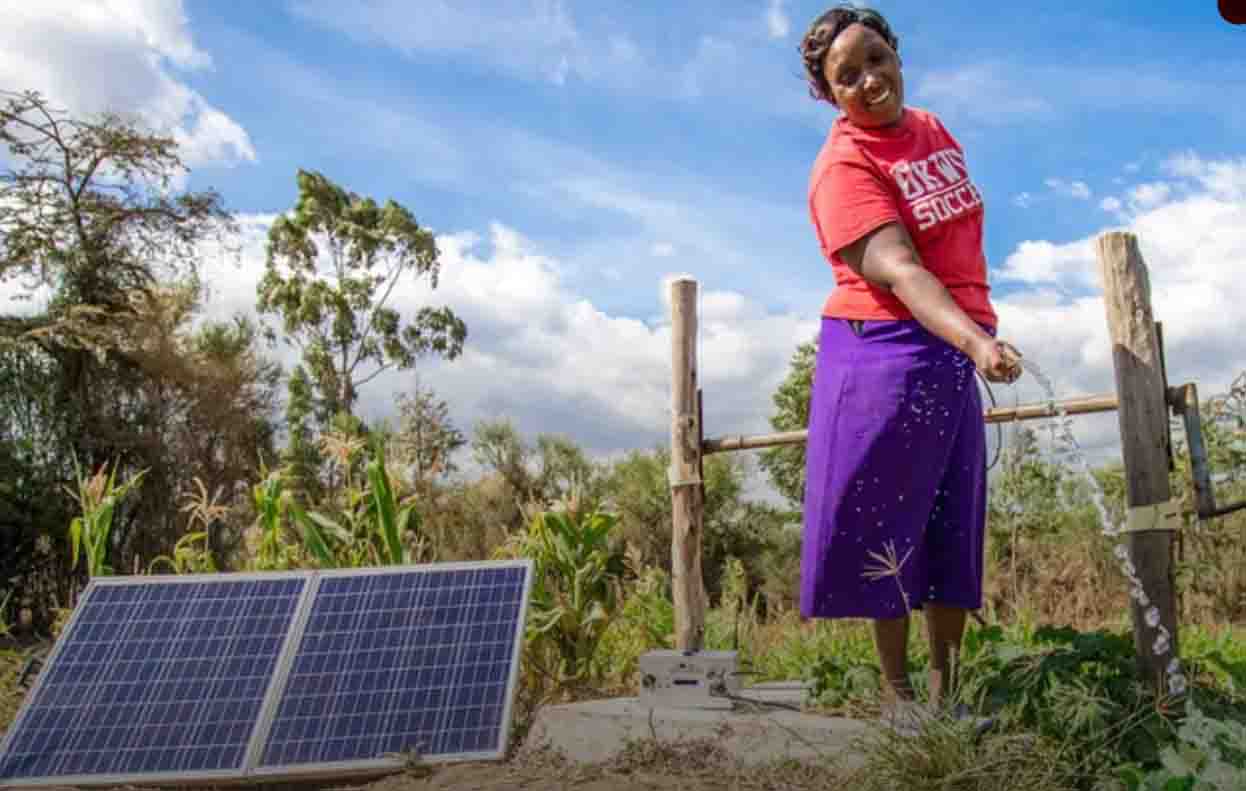


























































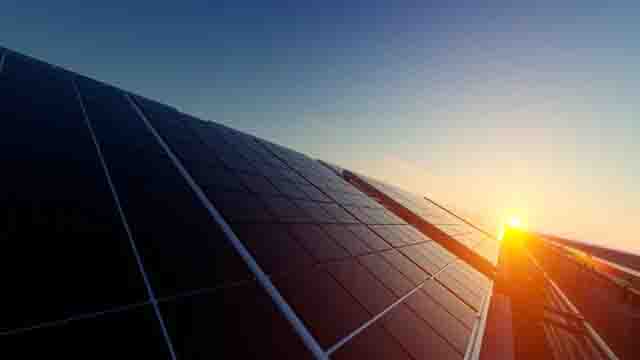






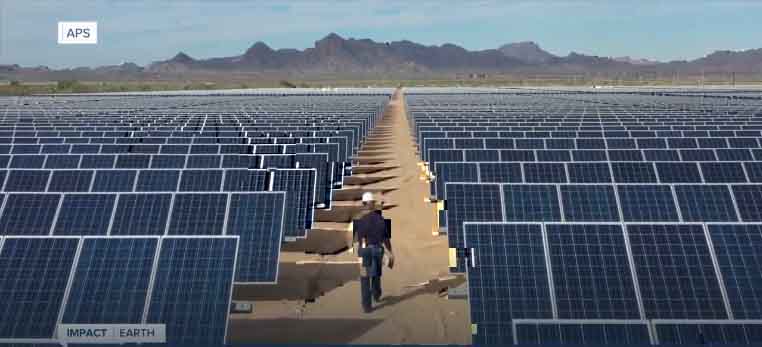 APS has several large photovoltaic (PV) systems in the desert outside Gila Bend, Arizona. They are now adding energy storage systems to some of these PV systems. There is a good article about these on ABC15.com
APS has several large photovoltaic (PV) systems in the desert outside Gila Bend, Arizona. They are now adding energy storage systems to some of these PV systems. There is a good article about these on ABC15.com






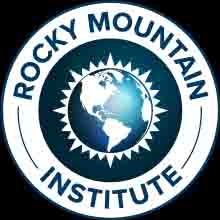 Battery Storage Costs Drop Dramatically, Making Way to a New Era. A recent Rocky Mountain Institute (RMI) report continues to confirm that clean electrification through batteries is advancing at impressive rates. Very interesting report: Breakthrough Batteries- Powering the Era of Clean Electrification
Battery Storage Costs Drop Dramatically, Making Way to a New Era. A recent Rocky Mountain Institute (RMI) report continues to confirm that clean electrification through batteries is advancing at impressive rates. Very interesting report: Breakthrough Batteries- Powering the Era of Clean Electrification 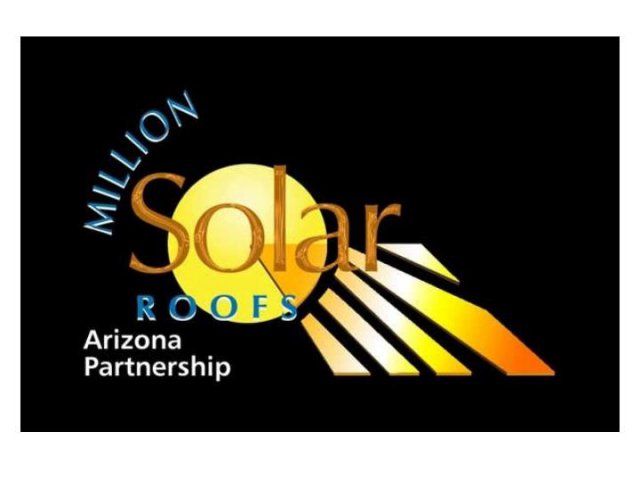
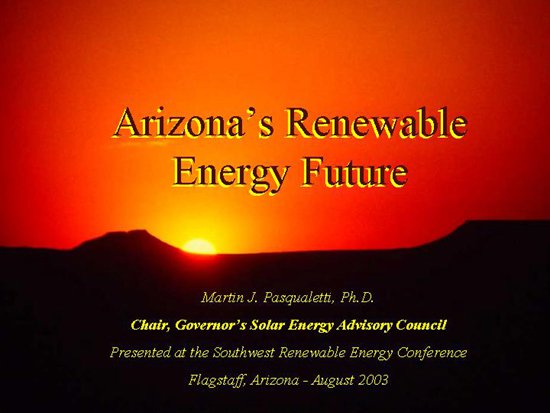
 Arizona Solar Center Mission- The mission of the Arizona Solar Center is to enhance the utilization of renewable energy, educate Arizona's residents on solar technology developments, support commerce and industry in the development of solar and other sustainable technologies and coordinate these efforts throughout the state of Arizona. About the Arizona Solar Center- The Arizona Solar Center (AzSC) provides a broad-based understanding of solar energy, especially as it pertains to Arizona. Registered
Arizona Solar Center Mission- The mission of the Arizona Solar Center is to enhance the utilization of renewable energy, educate Arizona's residents on solar technology developments, support commerce and industry in the development of solar and other sustainable technologies and coordinate these efforts throughout the state of Arizona. About the Arizona Solar Center- The Arizona Solar Center (AzSC) provides a broad-based understanding of solar energy, especially as it pertains to Arizona. Registered